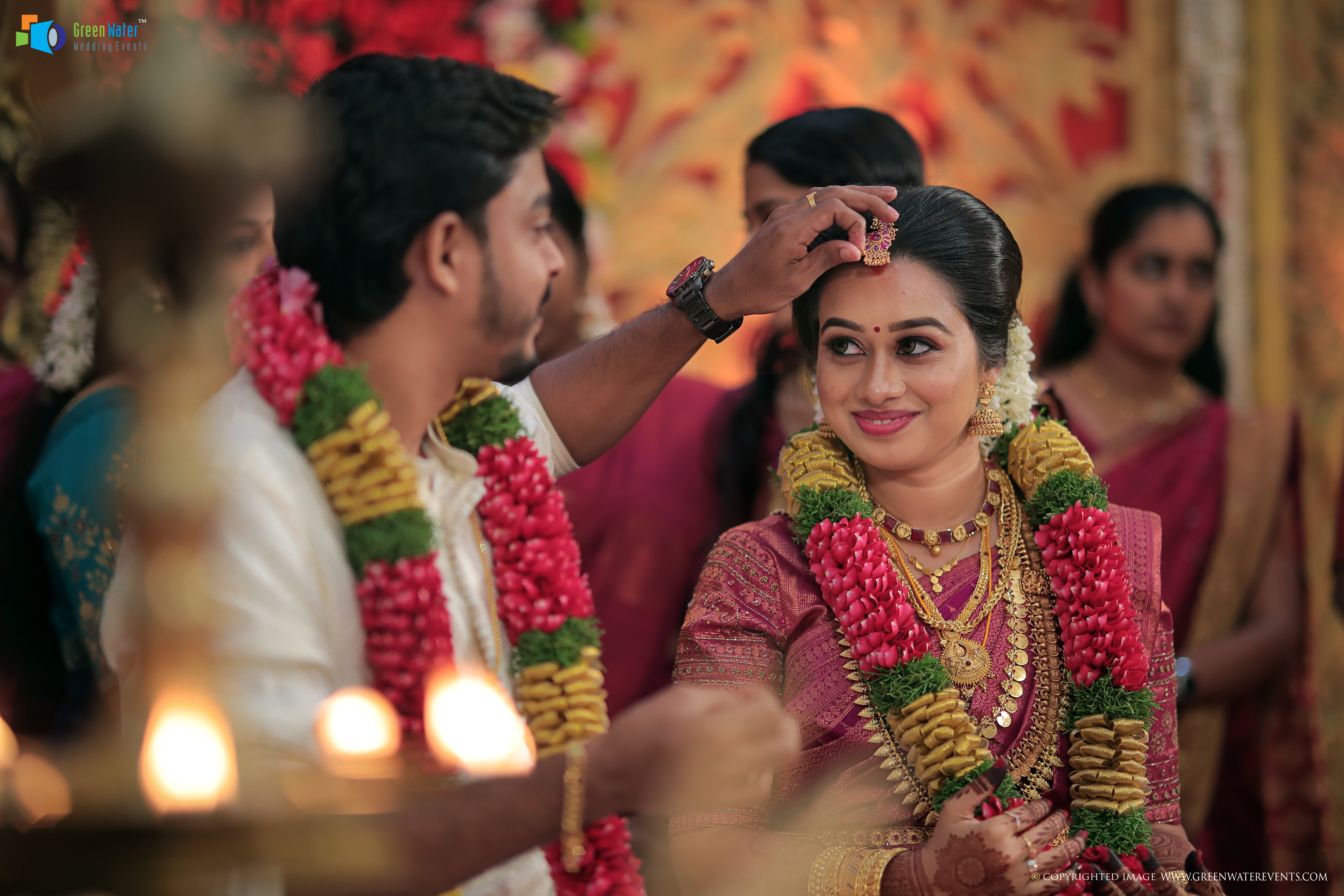
Wedding ceremonies in God’s Own Country are not very different from the rest of the country. However, in this land of the water, forests, and nature, wedding rituals are simple and short. Let us take a peek into the different rituals that are performed in the houses of the bride and groom before, during, and after the wedding.
Nair Community
Nair weddings are short and crisp. In most cases, Nair weddings take place in temples in the presence of the Lord. However, many weddings these days also take place in decorated wedding halls.
The pre-wedding ceremonies include Nischayam and Mehendi.
Nischayam
This is the traditional engagement ceremony for the couple. The families gathered to celebrate the occasion by exchanging the matched horoscopes of the bride and groom. They also exchange rings, and this ceremony is called the “mothiram mattal” in local parlance. Gifts exchanged include jewellery for the bride.
Mehendi
Bridal “mehendi” is a ceremony that is celebrated in much the same manner across India. Traditionally, the women of the house, including maternal and paternal aunts, applied mehendi designs to the bride’s feet and hands. Nowadays, there are special mehendi artists who are called in to make intricate designs on the bride’s feet and hands. The artist then makes designs for all the women in the house.
Dakshina Kodukkal
This is celebrated by the bride and the groom in their respective houses before they reach the wedding venue. They seek blessings from the elders in their houses.
The bride and the groom are then welcomed into the hall/wedding venue with a “thalappoli” – a procession of women and girls who are relatives of the bride dressed in their best and holding lamps.
Kanya Daan
In the presence of the family priest, the father hands over the daughter formally to the bridegroom in marriage. This is a poignant and very holy ceremony.
The groom’s father then hands over the “mangalsutra,” which the groom ties around his bride’s neck. This is when the couple officially becomes man and wife. This ceremony is called the “thalikettu”.
The next ritual is the “pudamuri,” in which the groom hands over a saree to his wife on a platter. This signifies that he will be her provider for life.
Sadya
The next item on the agenda is the Sadya, or the traditional lunch served on banana leaves for the couple, their families, and the guests.
A traditional Kerala Sadya has different curries made of vegetables, a generous helping of rice, curries like Sambar, Rasam, Kaalan, and Olan, and pappads, chips, and pickles. There are also other accompaniments such as pachadis, kichadis, and kootukaris. The most popular item in the sadya is always the payasam, or sweet porridge. Kerala payasams are famous for their flavours and tastes. Some of the most popular payasams include the ada pradhaman, nendra pazha pradhaman, and parippu payasam.
There are, at the least, approximately 25 items served on the banana leaf.
Post-wedding rituals include the “griha pravesham”. Here the bride enters the new home along with her husband and the ladies of the house welcome her traditionally. She enters the home at the ebst muhurtham (the best designated time) with a lamp in her hand. This ceremony is also called “kudivep.”
These wedding traditions are a combination of the local indigenous customs as well as those of the Namboothiri Brahmins. While there may be minor variations across the state, most of the rituals remain the same. At the end of it all, a typical Nair wedding in Kerala is simple, sweet, and brief, with a minimum of rituals and religious practices.
